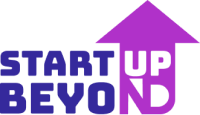
Most startup ideas sound good in your head. A few even look good on paper. But if you’re serious about building something people will use, and pay for, you have to validate it before building anything.
According to CB Insights, 42% of startups fail because there’s no market need for what they’re offering. That means almost half of all startup failures are preventable. The root cause? Founders start building without confirming that someone actually wants what they’re building.
This guide walks you through how to validate your startup idea without writing a single line of code; using simple tools, real conversations, and measurable signals.
Why You Should Validate Before Building
We’ve all heard the stories: someone had a genius idea, worked nights and weekends, launched their product—and… radio silence.
Why? Because building is the easy part. Getting people to care is the hard part.
Startup accelerators like Y Combinator teach that early success comes from solving real problems for real people, not from scaling fast. Validation helps you avoid:
- Wasted time building features nobody needs
- · Burned money on marketing that doesn’t convert
- · Emotional burnout from launching to silence
By validating your idea upfront, you shift from guessing to knowing. That’s how smart startups start.
Validation Methods That Work (Without Writing Code)
Here’s what founders across the world use to test demand before they build:
1. Customer Interviews
Find 10–30 people in your target audience and have real conversations. Focus on problems, not your solution. Ask questions like:
- “What’s the most frustrating part about [problem]?”
- “What have you tried to solve it?”
- “How much would it matter if this problem was solved?”
Avoid pitching. Listen for patterns and pain.
2. Surveys
Surveys help you scale insights. Use tools like Typeform or Google Forms to validate assumptions across a wider audience. Good survey design is key:
- Keep it short (5–7 questions)
- Include ranking questions (e.g. “Which is most important to you?”)
- Ask for emails if they want to hear when your solution is live
3. Landing Pages & Waitlists
A simple page with a value prop, maybe a short explainer video, and an email capture field. That’s all you need.
Use tools like Carrd, Webflow, or Unbounce. Test headlines, CTAs, and measure sign-up rates.
4. Fake Door Tests
This means adding a “Sign Up” or “Join Waitlist” button that leads to a “Coming Soon” message. It’s not about tricking people, but about measuring interest.
If nobody clicks, you just saved yourself months of building something nobody wanted.
5. Social Proof Tests
Tweet about your concept. Post it on Indie Hackers or LinkedIn. Measure replies, likes, DMs, or click-throughs to a waitlist link.
Founders underestimate the power of distribution in validation. Visibility reveals demand.
Doing Smart Market Research Without Hiring a Consultant
You don’t need a $5K research firm. You need search bars and curiosity.
Here’s where to dig:
- Google Trends: Is interest in your category growing or shrinking?
- Reddit, Quora, Twitter: Search for your problem statement. Read what people are complaining about.
- Product Hunt, AppSumo, Crunchbase: What products already exist? Who are their users? What do reviews love or hate?
- Keyword tools (Ahrefs, Ubersuggest): Look for keyword volume and content gaps
You’re not looking for perfect answers. You’re looking for signals of pain, motivation, and demand.
Building a Minimum Viable Validation Process
Validation doesn’t have to take months. You can run this process in a week.
1. Form a Hypothesis
Write it down:
“I believe [target audience] struggles with [problem] and would be willing to [sign up/pay] for [solution].”
2. Design a Small Test
Choose one or two methods:
- 1–1 interviews
- A waitlist page
- A tweet thread with a signup CTA
3. Set a Success Metric
For example:
- 15%+ conversion rate on landing page (visits to email signups)
- 30 people fill out your survey with qualified answers
- 5 people reply to your cold outreach asking for more info
4. Run the Test (Fast)
Keep it lean. Don’t over-polish. The goal is feedback, not perfection.
5. Evaluate Objectively
Did you hit your metric? Why or why not? What did people say? Did they show real interest or just give polite compliments?
When to Move Forward (And When to Pause)
Validation doesn’t need to be unanimous approval. You’re looking for:
- Consistent patterns in pain points
- Engagement signals (clicks, signups, preorders)
- Pull behavior (users asking when it’s ready, offering to pay, sharing it with others)
If you’re only hearing vague encouragement, or chasing people down to talk: pause
Lack of validation isn’t failure. It’s data. It’s a redirection.
Once you’ve validated your idea with real conversations and real signals, you’re ready to build your MVP with confidence, and evidence.
Stop Guessing. Start Testing.
Startup success doesn’t start with product—it starts with proof. Proof that someone cares. That they’re willing to engage. That you’re solving a real problem.
Validation isn’t glamorous. But it’s the part that separates ideas that die in notebooks from those that get funded, launched, and used.
You don’t need a dev team to start. You just need a question, a hypothesis, and a willingness to listen.
Start validating today. The product can wait.



